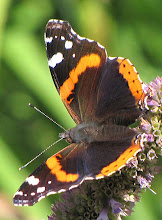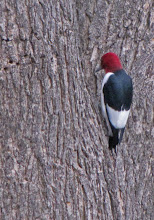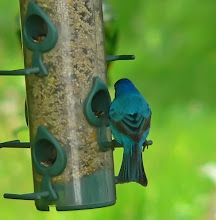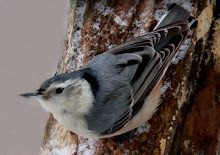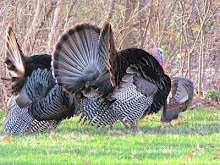Finally we have a week of beautiful weather. I tiptoe around the edges of the garden. I’m bent over, peering down, looking for signs of green, brushing away a little leaf mulch and then putting it carefully back. I have to time my garden activity perfectly. If mulch is raked away too early, it won’t protect the tender shoots from late frost, but if left too long, there could be injury to the new plants it protects. When the forsythia bloom is the general rule here. Cut back perennials, prune roses and remove mulch when the forsythia begin to flower. (Southern gardeners are probably wondering why anyone would try to garden in a place where the last spring frost date is May 15th:)
Every spring I regret not planting more very early bloomers like hellebore and crocus. It’s the high failure rate that always makes me hesitate. More often than not, early flowers are either buried under several inches of snow or ruined by hard freezes. The failure years always seem much harder than if I had nothing at all to anticipate.
I’m surprised to see how dry the upper layer of soil is. After the abundance of snow that just melted, I expected the ground to remain wet longer. Rain is predicted for this weekend and we really need it to give plants a good start.
The lamium leaves are limp but still hold that pretty green and white pattern. Lamium tries to be an evergreen, remaining leafed out all winter, protected by the snow. Strawberries too and heuchera keep their foliage. I’ve seen early daffodils blooming in other gardens but mine are way behind. Some of the distinctly striped species tulip foliage is showing--not much. I planted a dozen or more bulbs last fall and not nearly that number has emerged. Disappointing.
The pagoda dogwood leaf buds are swelling and the lilacs are just forming flower buds. Spring is always cautious in the north. In May the earth will explode, making up for time lost.
The pagoda dogwood leaf buds are swelling and the lilacs are just forming flower buds. Spring is always cautious in the north. In May the earth will explode, making up for time lost.

This is Hocus Pocus, the perfect friend to share a comfy chair or a pillow with while reading a good mystery.

Round the eastern coast of Norfolk, the North Sea creeps upon the land and leaves behind a desolate place known as the salt marsh; a landscape of oozing mud and deep pools hidden beneath rampant grass and reeds. Thousands of years ago, this hostile place may have held religious significance for primitive peoples. Upon it they built a wooden henge and set markers to navigate the quicksand beds.
Today, this lonely site is shunned by most, but Dr Ruth Galloway chooses to live here near where she first excavated the site of the ancient henge. Dr Galloway, archaeologist, anthropologist, and professor at Northern Norfolk University, views the salt marsh with a strange combination of fear and awe, love and loathing. Although the road to her cottage, one of only three houses on the marsh, is frequently flooded and impassible, she is determined to ignore these inconveniences and remain living with the history of the long ago people who dwelt here.
Her anthropology expertise makes her the logical person to consult when the shifting bog gives up the body of a child. Could this child be Lucy Downey, taken from her home ten years ago with never a trace or clue to her fate? The missing child has haunted Detective Chief Inspector Harry Nelson these long years. After the child went missing, the kidnapper taunted him with letters giving cryptic clues to Lucy’s final resting place. A brief examination by Dr Galloway results in the discovery of an Iron Age torc around the child’s neck and she determines this is not Lucy but rather an amazingly well
preserved corpse that dates to perhaps 600 BC.
Another crushing disappointment for DCI Nelson, but a career building discovery for Galloway. Still, the Inspector senses an ally in Ruth. Her ready knowledge of folklore and ancient myths may aid him in discovering clues in the letters written by the kidnapper (if they were indeed written by him and not some publicity seeker trying to gain attention from a high profile case). Thus, Ruth is drawn into the search for the long missing Lucy and her abductor.
Author Elly Griffiths creates a vivid picture of this desolate bog, a place of neither sea nor land that holds many secretes and must be coxed into revealing them. The British have a knack for writing dark and brooding atmosphere. I have a feeling that we Americans would look upon this place as a mostly sunny wetland full of wonderful birds and colorful plants, but that would not add to the sinister tone of the story. Instead, Griffiths paints us a landscape, lonely and unfriendly, dark and wet and always willing to
accept the sacrifices of man and hold them forever.
Ruth Galloway is an unusual main character. Neurotic, aging and overweight, struggling with a lot of anger and self worth issues, she isn’t at first a very likable heroine. We glimpse her thoughts and see mostly self absorption and repressed hostility. It was not Ruth’s character, but rather the romance of ancient legends that pulled me deeply into the story. DCI Nelson is a more compelling character. He is both intense and focused and the reader can’t help but sympathize with his frustration over his failure to resolve the
Ruth Galloway is an unusual main character. Neurotic, aging and overweight, struggling with a lot of anger and self worth issues, she isn’t at first a very likable heroine. We glimpse her thoughts and see mostly self absorption and repressed hostility. It was not Ruth’s character, but rather the romance of ancient legends that pulled me deeply into the story. DCI Nelson is a more compelling character. He is both intense and focused and the reader can’t help but sympathize with his frustration over his failure to resolve the
Lucy Downey case.
Familiar as we are here in America with police procedurals (we are bombarded by forensic shows such as CSI, NCIS and Law and Order) we may also wonder why the Norfolk police didn’t call in experts in the fields of mythology and religion to analyze the letters at the beginning of the abduction case rather than ten years later. All I can say is that most novels have these irritating flaws but if the author has already hooked her readers, minor problems can be overlooked.
Familiar as we are here in America with police procedurals (we are bombarded by forensic shows such as CSI, NCIS and Law and Order) we may also wonder why the Norfolk police didn’t call in experts in the fields of mythology and religion to analyze the letters at the beginning of the abduction case rather than ten years later. All I can say is that most novels have these irritating flaws but if the author has already hooked her readers, minor problems can be overlooked.
For years I have been an avid reader of the novels of Beverly Connor and Kathy Reichs, both anthropologists. Elly Griffiths’ first novel The Crossing Place is different even though the theme is similar. Slower paced and featuring not the self assured professional women created by the first two authors, but rather a competent academic who is more comfortable with cats than police inspectors and who, every morning must deal with her own self image before she can face the challenges of the day.
This book lost points with me for the following reasons:
This book lost points with me for the following reasons:
Animal cruelty. I know it’s just a book, but the cruelty was senseless.
Too much angst and self-absorption.
The ending was just too well tied up. All the puzzle pieces fell in place much too quickly and too perfectly.
I knew who the evil doer was from the beginning (but there were a few surprises in the red herrings Griffiths threw at us).
Too much angst and self-absorption.
The ending was just too well tied up. All the puzzle pieces fell in place much too quickly and too perfectly.
I knew who the evil doer was from the beginning (but there were a few surprises in the red herrings Griffiths threw at us).






















